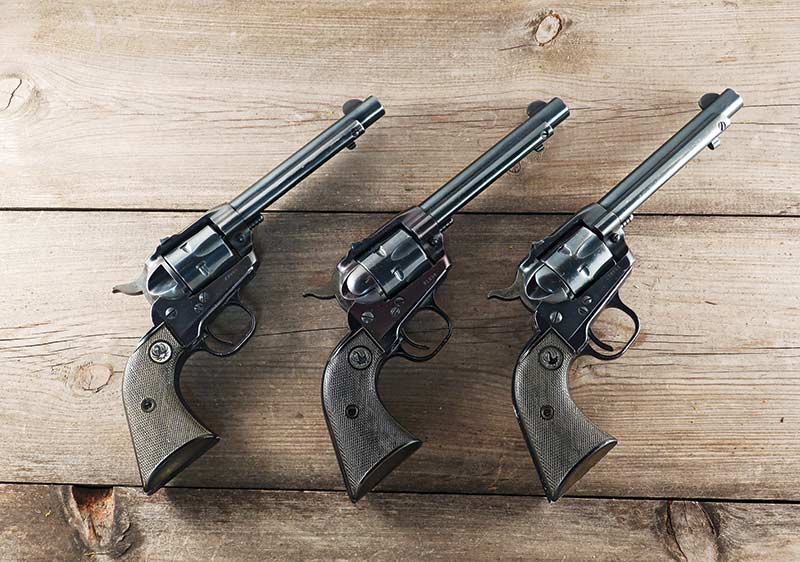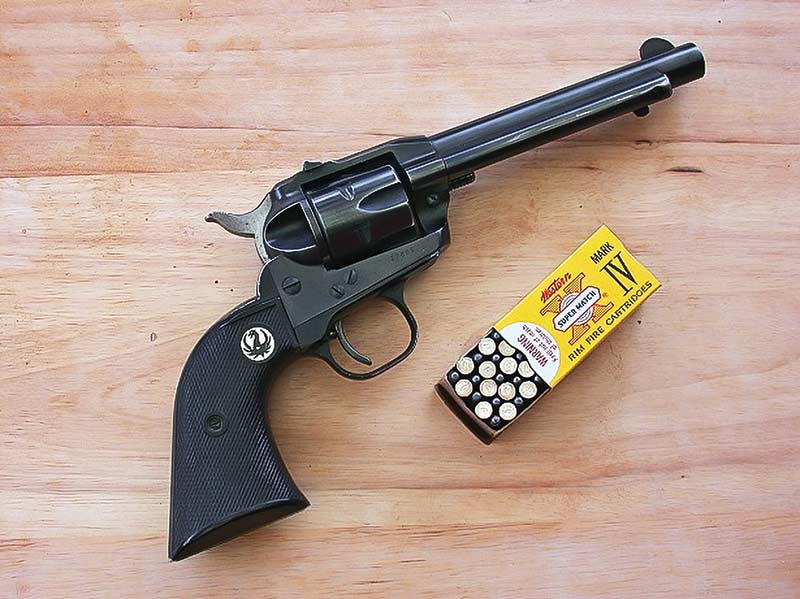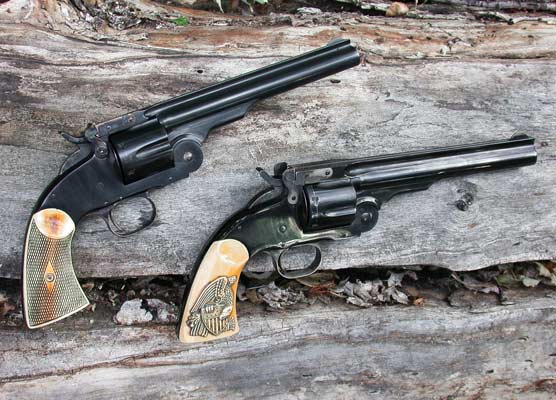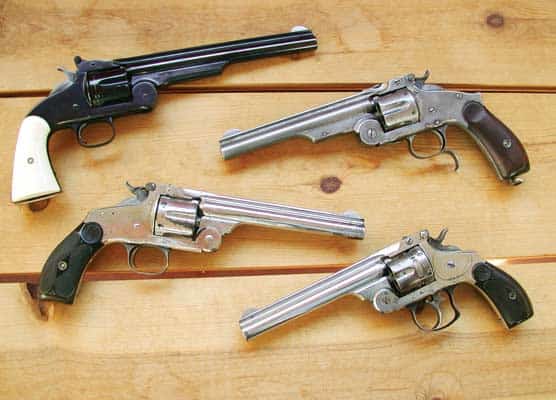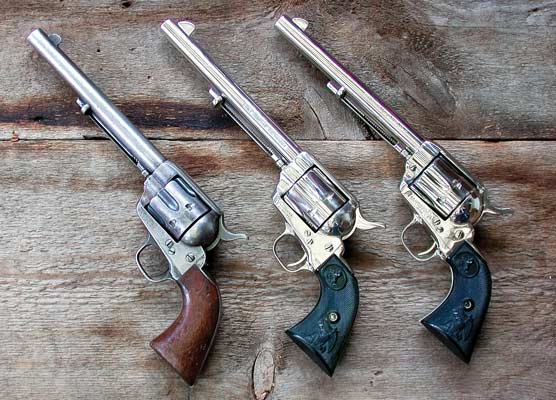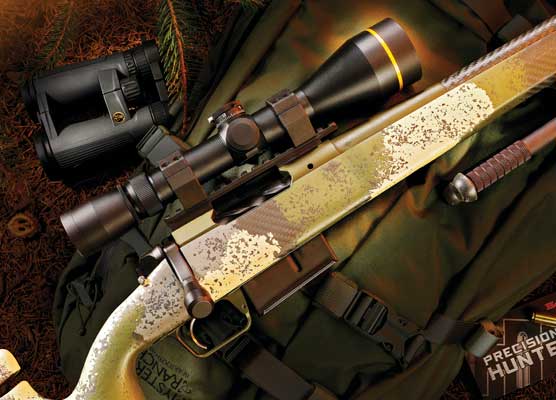Compromise Part 10:
Ruger Single-Six
Compromise Part 10: Ruger Single-Six
That wonderful year was 1953. I was a freshman in high school and Bill Ruger brought out his first revolver that would be the beginning of a sixgun dynasty. My allowance had been raised from 25 cents to 50 cents a week, so other than a Cherry Coke after school or a new reflector for the mudflap on my bike, there was no money left for something as expensive as the $63.25 Ruger Single-Six .22.
By the time I became a junior, I had a paper route that paid me $15 per week; however, I gave one week’s pay each month to my Mom and also paid all my school expenses and clothing costs. So, there was still no expendable money left for anything such as this new Ruger.
When I graduated from high school, I soon got a really high-paying job, $40 a week so purchasing my own firearms looked very promising. My first purchase was a .22 Marlin Mountie 39A which I soon equipped with a Redfield Receiver Sight. It still wears the same sight today, still shoots as good as it ever did and my daughter uses it at least twice a week when we shoot together.
I doubt if any other rifle over the past 65+ years has given me any more joy than that original Marlin. However, every good levergun needs a good companion sixgun and it was easy to make the proper choice. It had to be the Ruger 5 ½” .22 Single-Six, which is now known to collectors as the Flat-Top. After 65+ years, it also shoots as well as it ever did, which is superb.
Genesis
In the early 1950s, the Colt Single Action Army was history and Colt had said they would never produce it again. However, history does not always travel a straight path but rather has a habit of taking strange twists and turns.
By 1950 we had a black and white television sitting in the corner cranking out hour after hour of old B Western movies from the 1930s. The quality of both movies and TV were pretty mediocre, but nevertheless they created a demand for single action sixguns. Bill Ruger knew if he built a quality .22 semi-automatic pistol, it would sell. In 1953 he combined the natural love shooters had for both .22s and Western movies and single-handedly resurrected the single-action sixgun.
One might think the natural thing would be for Ruger to bring out a modern single action chambered in .45 Colt. However, Ruger put the wwidea of a centerfire sixgun on the shelf and instead brought out a sixgun that operated and felt like a Colt Single Action Army but scaled down — everything but the grip frame — to .22 size.
The new Single-Six was a traditional single action with a flat loading gate and an ejector rod for shuckin’ empties while the lockwork was redesigned to use all coil springs, thereby eliminating the breakage-prone flat springs of the Colt. The action was so strong that when a Single-Six was hooked up to a machine at the NRA Annual Meeting to continuously cock and dry fire the display, the machine finally broke. Bill Ruger now had another winner on his hands.
That first Ruger .22 Single-Six was purchased with my own money as a teenager in those wonderful bygone days when guns were truly accessible in my area. Those early days shooting that wonderful little single-action .22, with the accompanying smell of Hoppe’s #9 after each shooting session, stirred deep inborn emotions and sent me on the path to a lifelong enjoyment of single-action sixguns.
My Single-Six was fitted with a plain black Lawrence #120 Keith holster and matching cartridge belt, and I was in Shooting Heaven with two great .22s and time to enjoy them. I would hate to count the number of jackrabbits and other varmints that have fallen to those .22s over the years, nor how many cans, rocks and dirt clods have met their fate since 1956. An early advertisement for the Ruger Single-Six .22 featured a drawing of a hand holding a Single-Six superimposed over another drawing of a rattlesnake. Shooters got the message — this was definitely an outdoorsman’s sixgun.
The early sixguns had a flat loading gate, a 5 ½” barrel, a flat top frame with the rear sight in a dovetail to allow for windage adjustment and a Colt-style front sight. The sight picture presented by the Single-Six was actually better than found on the Colt Single Action as the rear notch is a square matching up well with a non-tapered front sight. In 1957, the Single-Six received a real contoured loading gate in place of the original flat gate. The original was soon joined by convertible models with two cylinders chambered in .22 Long Rifle and the new .22 Winchester Rimfire Magnum.
From the early 1960s to the early 1970s we have the second generation of Ruger Single-Sixes offered in both the original sight configuration, as well as the Super Single-Six with fully-adjustable sights. Most of these were produced as convertible models and many with a 5 ½” barrel. If the original Single-Six .22 was viewed as a grand sixgun by most young sixgunners like myself, the Super Single-Six went way beyond grand and nipped at the heels of perfection.
Carried in the same #120 Lawrence Keith holster, it served me well in my home state of Ohio. When I moved the family to Idaho in the mid-1960s, it became the perfect companion for roaming sagebrush, foothills, forests and mountains. A .22 is certainly not a big game hunting sixgun; however, for varmints, small game, or just plain plinking rocks, it cannot be beat. And the extra added bonus of the Super Single-Six was the fact it came with an extra cylinder chambered in .22 Winchester Magnum allowing the use of the more powerful .22 cartridge.
As mentioned, the new, Super Single-Six was almighty close to perfection in a rimfire sixgun. However, in addition to offering a .22 Single-Six with fully adjustable sights, Ruger also made another change, which is either inconsequential or of great concern, depending upon one’s viewpoint of what a single action sixgun grip frame should feel like.
The first decade of Single-Sixes had, for all practical purposes, a grip frame that was a dead ringer for the Colt Single Action Army. This was one of its great assets. In 1963, someone changed the grip frame ever so slightly resulting in more knuckle room behind the trigger guard. For my hands and my shooting spirit, I wish it had never been done.
More Changes
The second generation, or Old Model, Single-Six would also last for one decade before being replaced by the New Model line of Ruger single actions. Until this time all single action revolvers were safe only when carried with the hammer down on an empty chamber. The New Model was, and is, safe to carry with a fully loaded cylinder as the hammer never rests on the primer of the cartridge case. Instead, a transfer bar is fitted. When the hammer is cocked, this bar slides into place between the hammer and the firing pin.
All New Model Rugers are easily distinguished by a mainframe having two pins instead of three screws. In fact the Single-Sixes produced from 1953 to 1973 are often characterized as “Three Screw” Rugers, with approximately one-half million being produced.
Once the sixgun is fired, it retreats and the hammer no longer contacts the frame-mounted firing pin. I was one who was not happy at the time with this change; however, after more than 50 years use, I am convinced it has prevented countless numbers of negligent discharges.
By 1974 Ruger New Model Single-Sixes received a new look with the addition of a stainless steel version. Whether the Ruger Single-Six is one of the original flat-gates, the contoured gate model, the Old Model, or New Model, or even if it is blue or stainless, Ruger Single-Sixes have provided well over one million examples of the near-perfect outdoorsman’s .22.
It was made for rough use in any type of weather, especially so in the stainless steel version, and has a virtually indestructible action. I expect those I have accumulated over the last 65+ years will still be operating in the hands of my great grandkids and their grandkids for at least another 65+ years. It certainly deserves the title of Perfect Packin’ Pistol .22 Rimfire-style.

Get More Revolver Content Every Week!
Sign up for the Wheelgun Wednesday newsletter here:
